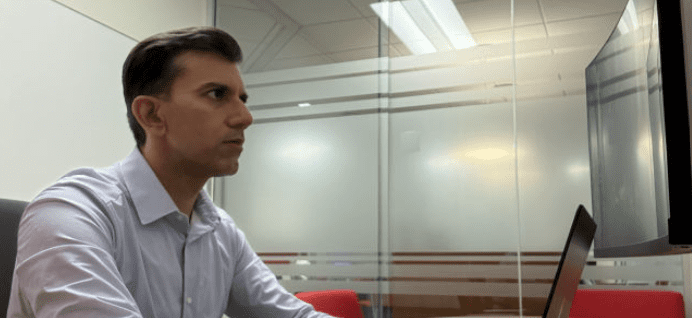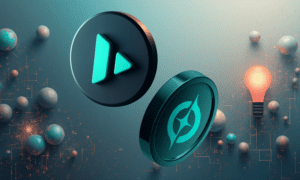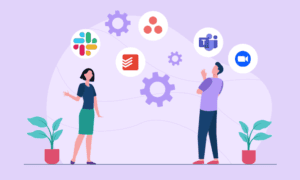The digital transformation era has arrived at an inflection point. For decades, enterprises have invested in migrating legacy systems to the cloud, but the process has remained slow, costly, and error-prone, often limited by human capacity to understand complex, undocumented systems. The emergence of Generative AI has fundamentally altered that equation.
Across industries, a new generation of engineering leaders is exploring how AI can automate understanding, discovery, and modernization at scale. Among them is Bhupender Saini, a veteran technologist who has spent the last two decades guiding large-scale modernization programs and building high-performance engineering organizations. Known for combining architectural depth with business clarity, Saini’s work demonstrates how AI can evolve from a tool for coding to a strategic catalyst for enterprise transformation.
“AI is redefining what’s possible in software delivery,” Saini explains. “It’s no longer just about automating tasks, it’s about accelerating understanding. When machines can read, reason, and document complex systems, we free human engineers to focus on innovation.”
From Code to Context: Reinventing the Modernization Workflow
One of Saini’s most ambitious projects tackled a problem that has haunted global enterprises for years, how to modernize mission-critical legacy systems with little to no documentation. The system in question managed crew operations and regulatory compliance for one of the world’s largest airlines, built decades ago in aging languages like VB6 and T-SQL.
Traditional approaches would have required months of manual reverse engineering just to establish a baseline understanding of business logic. Saini and his team instead turned to GenAI. Using a novel combination of large language models and graph-based source parsing, they developed a framework capable of analyzing more than one million lines of code.
Each function and rule was mapped into an intelligent graph database, allowing AI agents to infer system behavior, generate functional requirements, and even cluster related features into business-level specifications. Within just three months, the process produced a validated backlog, cutting documentation time in half and delivering immediate clarity for rebuilding the platform as a modern, cloud-native application.
“The idea was to make AI an interpreter, not just an assistant,” Saini says. “By embedding context into how the code was parsed and represented, we gave the system the ability to explain itself.”
Scaling Intelligence Through Design
The technical breakthrough was not just in speed, but in scalability. By treating each line of source code as a connected node, Saini’s model allowed AI to handle massive repositories that traditional static analyzers could not. It also introduced a multi-agent workflow, where specialized AI models worked in tandem to translate technical findings into human-readable business stories, enabling real-time collaboration between engineers, architects, and stakeholders.
This design represented a new kind of engineering intelligence: self-documenting, self-organizing, and infinitely repeatable. The results were transformative. Beyond reducing project time and cost, the AI-driven framework cut human effort by 50%, created reusable assets for future migrations, and established a new methodology for modernizing legacy systems across industries.
“The success of the project wasn’t just in how fast it worked,” Saini reflects. “It was in how it changed the relationship between humans and code. We built a bridge between generations of technology.”
AI as an Engineering Multiplier
Saini’s career has long been defined by his ability to scale systems and teams with precision. Over two decades, he has led global engineering organizations through cloud migrations, platform rearchitectures, and enterprise digitization initiatives that have collectively delivered hundreds of millions in value.
But his recent focus, using AI to enable engineering efficiency, signals a shift in what leadership looks like in the modern software landscape. Rather than optimizing existing pipelines, Saini advocates for building AI-native engineering cultures where automation and context-awareness are part of the design from day one.
“Engineering leaders must now think beyond cloud adoption,” he says. “The next frontier is cognitive adoption, teaching our systems to learn from themselves, to make intelligent recommendations, and to anticipate change.”
Building Compliance and Confidence Into the Core
The implications extend beyond technical speed. For industries like aviation, finance, and healthcare, where operational integrity is non-negotiable, GenAI-driven modernization ensures not only efficiency but also compliance. By automatically capturing and mapping regulatory dependencies embedded in legacy systems, Saini’s approach helps organizations maintain safety and compliance during transformation.
In one case, the AI framework directly supported compliance with stringent flight crew and labor safety regulations, ensuring continuity of operations while old systems were phased out. “Trust is the hardest thing to engineer,” Saini says. “When you modernize systems that people’s safety depends on, your process must be as reliable as your code.”
Redefining What Engineering Leadership Means
Through his body of work, Bhupender Saini has emerged as one of the industry’s foremost voices on the intersection of AI and engineering transformation. His ability to merge deep technical insight with organizational strategy exemplifies the next generation of technology leadership, one that sees Generative AI not as a replacement for human creativity, but as an accelerator of it.
Today, Saini’s work stands as a playbook for how to make secure-by-design and AI-assisted modernization a repeatable practice. His teams have proven that automation and accountability can coexist, and that the art of software engineering is evolving into something larger: a discipline that designs not just systems, but systems that design themselves.
“Software modernization isn’t just about keeping up with technology,” Saini concludes. “It’s about redefining how we build, how we learn, and how we trust. Generative AI gives us the opportunity to rebuild our digital foundations, not once, but intelligently, again and again.”



































